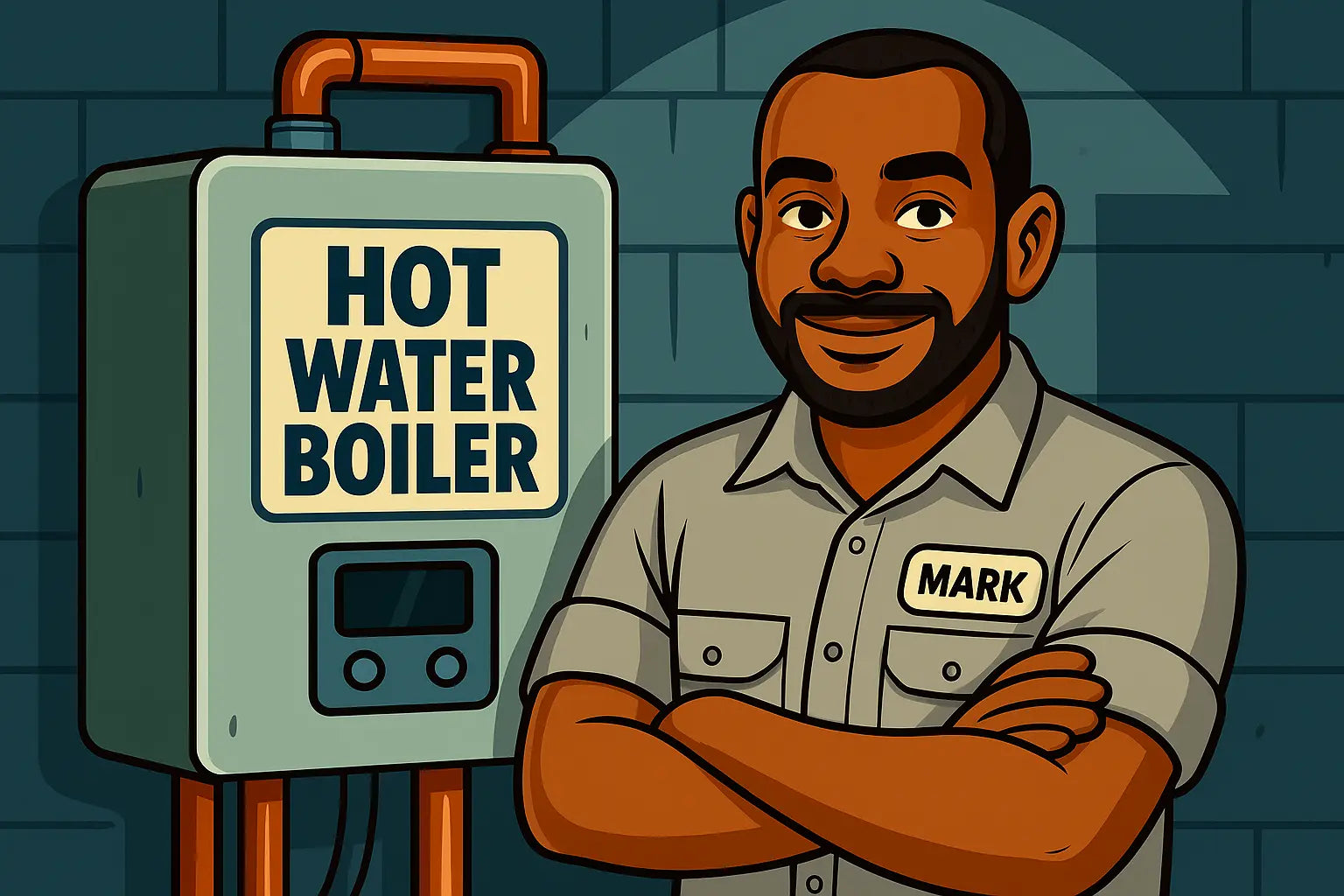Hello from Mark:
Hey there, boiler warriors 🔧🔥
Let’s talk about that moment when your trusty Weil-McLain starts flashing weird codes like it’s auditioning for a spot in The Matrix. No heat. Red lights. Panic. But don’t sweat it—today I’m your boiler whisperer. We’re cracking those codes wide open.
I’m gonna walk you through the top 10 error codes, what they actually mean (in real English), and what you can do about ’em. Some fixes? Easy-peasy. Others? Might need a pro. Either way, you’ll know what you’re dealing with.
Let’s get decoding!
1. E-02: Flame Failure (or Flame Not Detected)
This one’s a drama queen. It basically means the boiler tried to light and... nothing happened. Could be:
-
Gas valve issue
-
Dirty flame sensor
-
Bad ignitor
DIY Tip: Clean the flame sensor with emery cloth and check for loose wires. If it still fails, this guide from Energy.gov gives solid boiler troubleshooting tips.
Call a Pro If: You suspect a faulty gas valve or control board.
2. E-03: Pressure Too Low
This code tells you your system’s pressure has dropped below a safe level (often below 12 psi). That usually means a leak, or the boiler lost water somewhere.
DIY Tip: Check for obvious leaks or air in the lines. If needed, top up the system via the filling loop. Check out this handy tutorial from Rasmussen for pressure basics.
Call a Pro If: You keep losing pressure—it may be your expansion tank or a hidden leak in the loop.
3. E-04: High Limit Exceeded
This one’s serious. Your boiler is overheating and shutting down for safety.
Common causes:
-
Failed circulation pump
-
Closed zone valves
-
Gunked-up heat exchanger
DIY Tip: Make sure all zones are open and that the pump is running. A cool trick? Carefully feel the pipes—if your pump’s warm but not moving water, it may be seized.
Call a Pro If: The high-limit trips again right after a reset. You’ll want a deep system check.
4. E-06: Flame Detected When There Should Be None
This spooky little code pops up if your boiler senses a flame before ignition even starts. Usually means:
-
Dirty flame sensor
-
Moisture on the control board
-
Gas valve is leaking very slightly
DIY Tip: Clean the sensor and inspect the burner chamber. This article from Vaillant breaks down ignition issues with great visuals.
Call a Pro If: The unit keeps giving false positives. You don’t want gas issues going unchecked.
5. E-10: Ignition Lockout
After three failed attempts to light, the boiler throws in the towel. You’ll need to reset it, but first figure out why it failed.
Could be:
-
Faulty ignitor
-
Low gas pressure
-
Dirty burner
DIY Tip: Reset after cleaning the flame sensor and checking gas supply. If it relights, great. If not, call backup.
6. E-13: Water Temperature Sensor Fault
This one usually means the thermistor (temperature sensor) has failed or lost contact.
DIY Tip: Inspect the sensor wiring and connection. Sometimes just reseating the plug fixes it.
Call a Pro If: You need to replace the thermistor or if the reading is way off from actual water temps. This overview from Heatable explains boiler temp controls like a champ.
7. E-14: Return Water Temp Sensor Fault
Same deal as E-13, but on the return side. Again, it’s usually a faulty or disconnected sensor.
DIY Tip: Verify wiring. Swap with the supply sensor to test if you’re in a pinch.
8. E-28: Outdoor Reset Sensor Error
This code pops when your boiler can’t communicate with the outdoor temperature sensor. It may affect how your boiler adjusts heat output for changing weather.
DIY Tip: Check if the outdoor sensor wiring is pinched or corroded.
9. E-29: Communication Fault
This means something’s gone wrong between your control board and peripheral components. Could be:
-
Loose harnesses
-
Fried wiring
-
Surging power
DIY Tip: Turn off power, reseat all connections, then reset the system. Make sure you’re on a surge protector too—boiler brains are sensitive!
10. Hard Lockout with No Code
Sometimes your boiler refuses to play, but doesn’t give you a clear error. When this happens, look for blinking LEDs on the control board or listen for beeps. These can clue you in.
DIY Tip: Cycle the power, then watch closely. Some boards show hidden fault codes during startup. When in doubt, the Weil-McLain boiler manuals are your friend (they're often downloadable directly from their support page).
Pro Tips from Mark 🔧
-
Write down error codes before resetting your boiler—they help techs diagnose issues faster.
-
Never ignore repeat lockouts. They’re signs of something deeper.
-
Install a surge protector just for your boiler—modern units are picky about voltage drops and surges.
-
Regular maintenance cuts down 80% of these errors. Seriously. Clean sensors and flush annually.
Wrap-Up from Mark
Alright, DIY heroes—you’ve officially learned how to speak “Boiler-ese.” Next time that Weil-McLain unit flashes red or goes silent, you’ll know what to do. If you need a new part or just want to see what the latest Weil-McLain lineup looks like, check out The Furnace Outlet’s Weil-McLain boiler collection. They’ve got the good stuff, shipped fast.
Need winter maintenance tips for your boiler? Visit my guide: Cold-Weather Game Plan.
Until next time—keep those pipes warm, your sensors clean, and never let an error code ruin your weekend.
– Mark, your go-to HVAC tech 💪🔥







